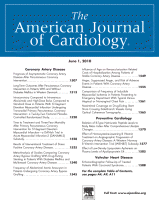 长期以来维生素D被认为对骨健康非常重要,并且近年来也被认为有益心脏保护。不过约翰霍普金斯大学的研究人员新的研究表明,当维生素D在血液中的水平高出正常水平时可能不但对心脏无益反而实际上会造成伤害。
长期以来维生素D被认为对骨健康非常重要,并且近年来也被认为有益心脏保护。不过约翰霍普金斯大学的研究人员新的研究表明,当维生素D在血液中的水平高出正常水平时可能不但对心脏无益反而实际上会造成伤害。
约翰霍普金斯大学医学院的内科学副教授Muhammad Amer, M.D.主导了这项研究。他说该研究显示血液中维生素D水平升高与心血管炎症的常见标记—C反应蛋白(亦称CRP)的较低水平有关。
Amer和他的同事Rehan Qayyum对15000名参与国家健康与营养检测调查的成年人的数据进行了分析。他们发现,对于没有心血管炎症的成年人来说,当维生素D水平相对较低时,维生素D水平与CRP成反比。维生素D水平正常或接近正常的人更为健康、炎症水平更低。而血液中25-羟基维生素D的含量超过21ng/ml(该浓度被认为是维生素D的正常浓度)时,维生素D浓度的增加伴随着CRP的增加。CRP增加会导致血管硬化及心血管问题。
“由维生素D减弱的炎症好像并不能被更高浓度的维生素D减弱,”Amer说道。这项最新的研究成果发表在《American Journal of Cardiology》杂志上。“当然,维生素D对心脏健康很重要,尤其是维生素D在血液中浓度低时。它能够抑制心血管炎症和动脉硬化,还可能降低死亡率。不过,当超过某个点时又显得太过了。”
Amer说,消费者在补充维生素D之前应当谨慎,内科医生也应该知道潜在的风险。每日100个国际单位的维生素D的摄入会导致血液中25-羟基维生素D浓度上升1ng/ml。“人们在补充维生素D的时候应该确定自己是真的需要进行补充,”Amer说,“这些药可能产生不可预料的后果,尽管从技术上来讲它们没有毒性。”
研究人员表示,造成这种现象的生物学及分子机制还不明了。
维生素D经常被称为“阳光维生素”,因为它们的产生需要太阳的照射。少有食物含有维生素D,不过市售的奶制品通常强化了维生素D含量。由于人们呆在室内的时间越来越多,使用厚厚的防晒霜,因此缺乏维生素D的担忧正在加重。许多的医生会因此而开出维生素D,许多的消费者在看到一些新闻故事后也会自己去买维生素D。年长的女性通常会服用较大剂量来预防骨质疏松。

 Relation Between Serum 25-Hydroxyvitamin D and C-Reactive Protein in Asymptomatic Adults (From the Continuous National Health and Nutrition Examination Survey 2001 to 2006)
Relation Between Serum 25-Hydroxyvitamin D and C-Reactive Protein in Asymptomatic Adults (From the Continuous National Health and Nutrition Examination Survey 2001 to 2006)
Muhammad Amer, Rehan Qayyum
The inverse relation between vitamin D supplementation and inflammatory biomarkers among asymptomatic adults is not settled. We hypothesized that the inverse relation is present only at lower levels and disappears at higher serum levels of vitamin D. We examined the relation between 25-hydroxyvitamin D [25(OH)D] and C-reactive protein (CRP) using the continuous National Health and Nutrition Examination Survey data from 2001 to 2006. Linear spline [single knot at median serum levels of 25(OH)D] regression models were used. The median serum 25(OH)D and CRP level was 21 ng/ml (interquartile range 15 to 27) and 0.21 mg/dl (interquartile range 0.08 to 0.5), respectively. On univariate linear regression analysis, CRP decreased [geometric mean CRP change 0.285 mg/dl for each 10-ng/ml change in 25(OH)D, 95% confidence interval [CI] −0.33 to −0.23] as 25(OH)D increased ≤21 ng/ml. However, an increase in 25(OH)D to >21 ng/ml was not associated with any significant decrease [geometric mean CRP change 0.05 mg/dl for each 10-ng/ml change in 25(OH)D, 95% CI −0.11 to 0.005) in CRP. The inverse relation between 25(OH)D below its median and CRP remained significant [geometric mean CRP change 0.11 mg/dl for each 10-ng/ml change in 25(OH)D, 95% CI 0.16 to −0.04] on multivariate linear regression analysis. Additionally, we observed a positive relation between 25(OH)D above its median and CRP [geometric mean CRP change 0.06 mg/dl for each 10-ng/ml change in 25(OH)D, 95% CI 0.02 to 0.11) after adjusting for traditional cardiovascular risk factors. In conclusion, from this cohort of asymptomatic adults, independent of traditional cardiovascular risk factors, we observed a statistically significant inverse relation between 25(OH)D at levels <21 ng/ml and CRP. We found that 25(OH)D at a level ≥21 ng/ml is associated with an increase in serum CRP. It is possible that the role of vitamin D supplementation to reduce inflammation is beneficial only among those with a lower serum 25(OH)D.
文献链接:https://www.ajconline.org/article/S0002-9149(11)02748-2/abstract







